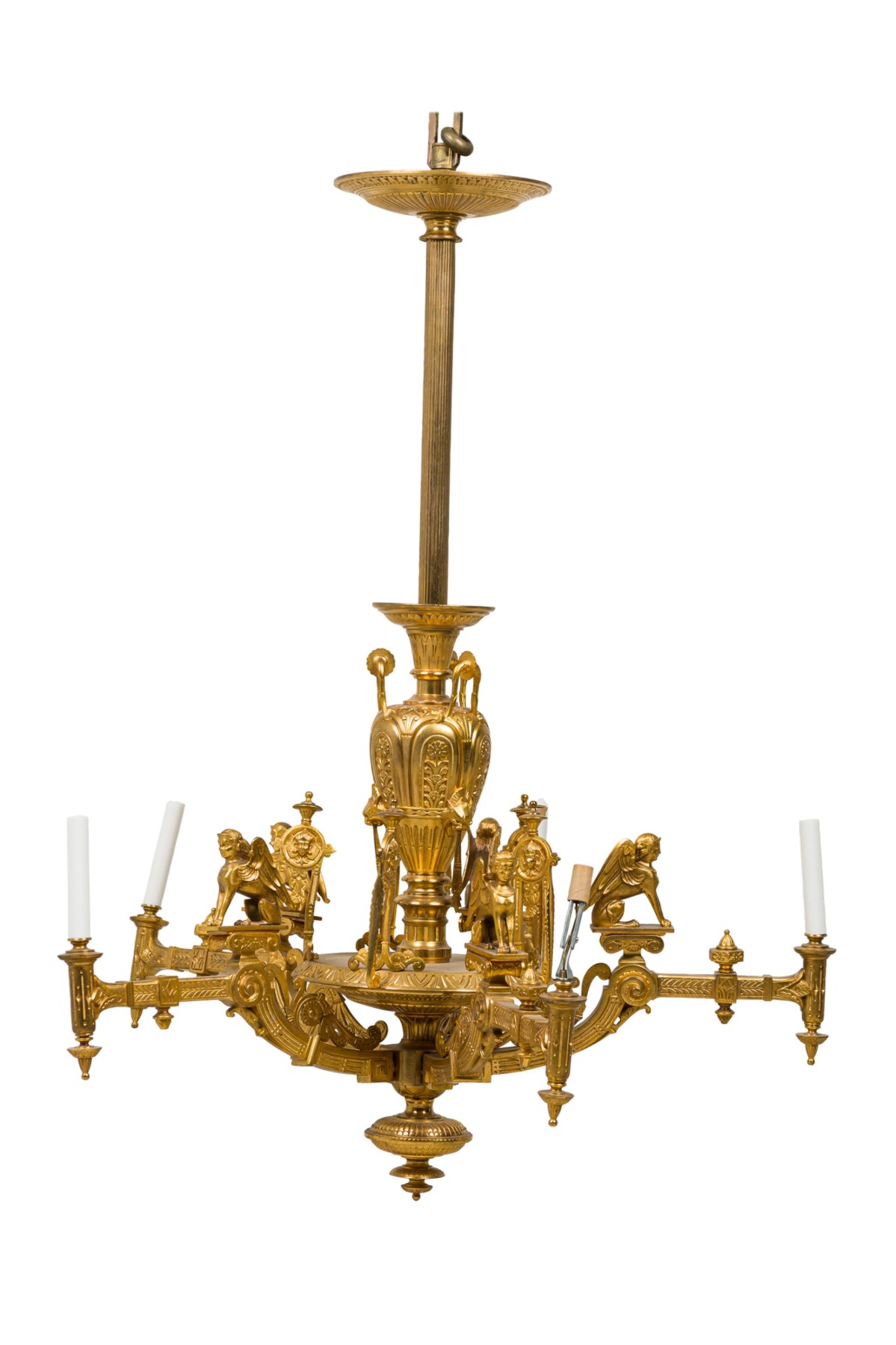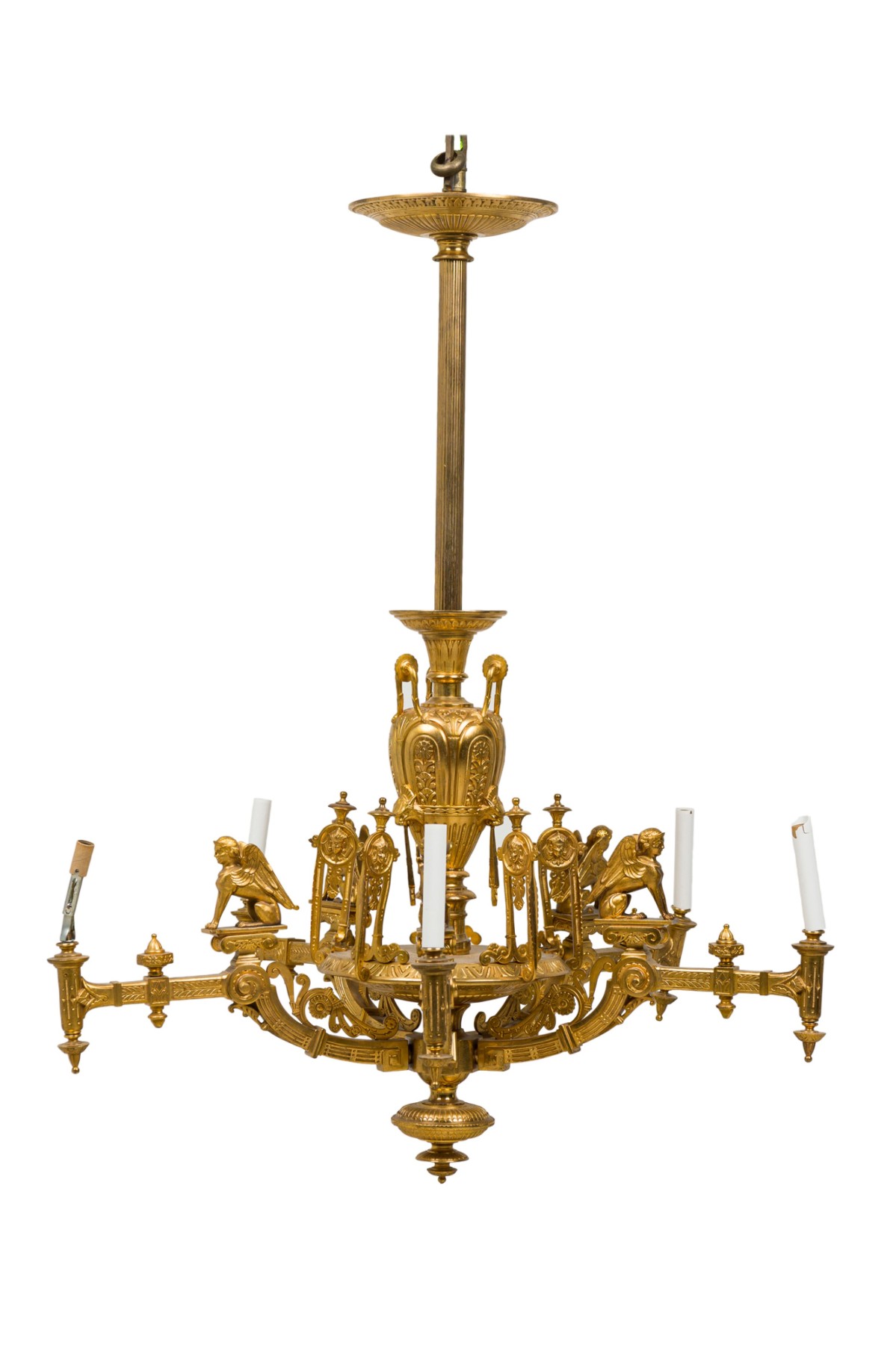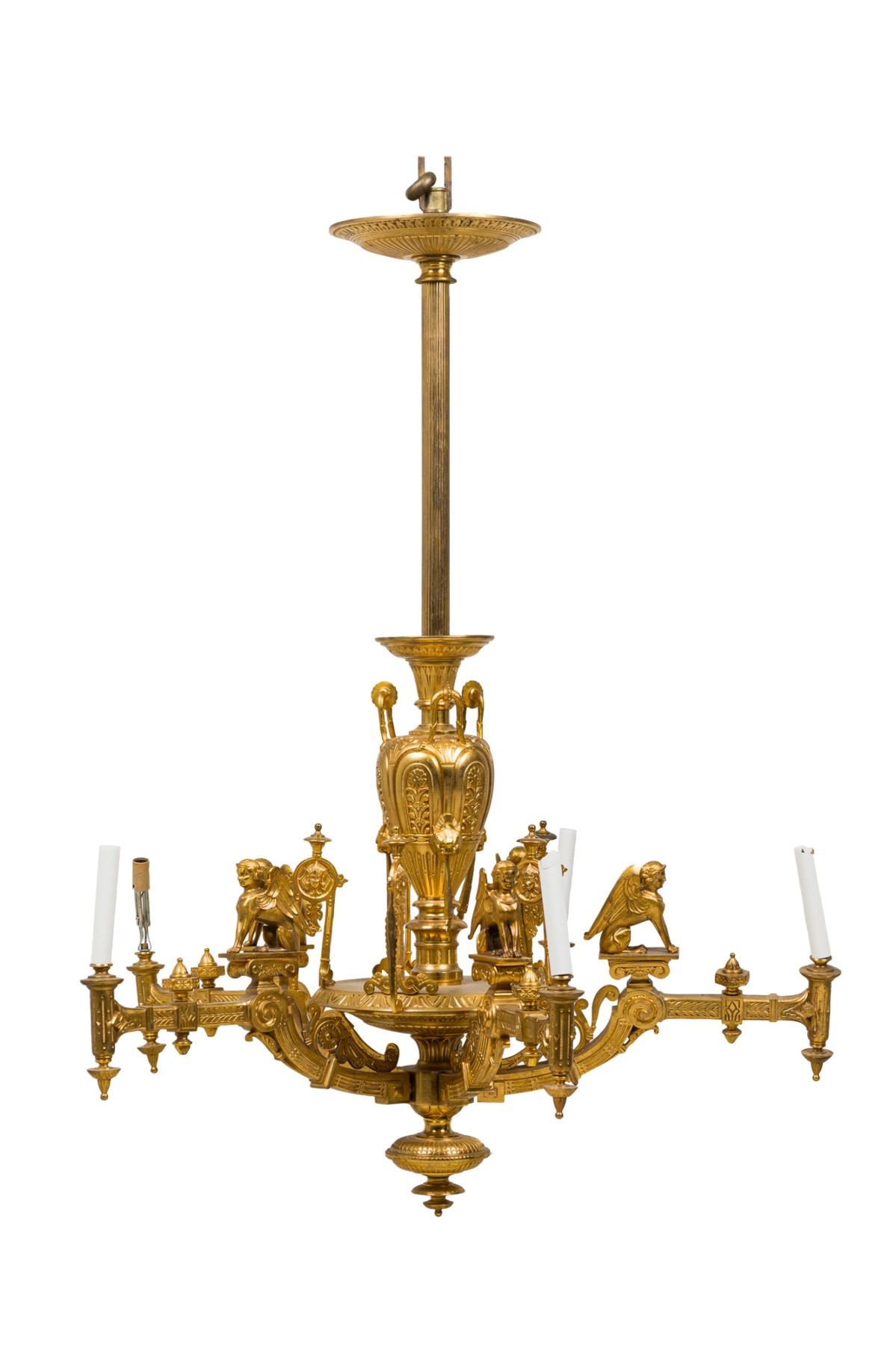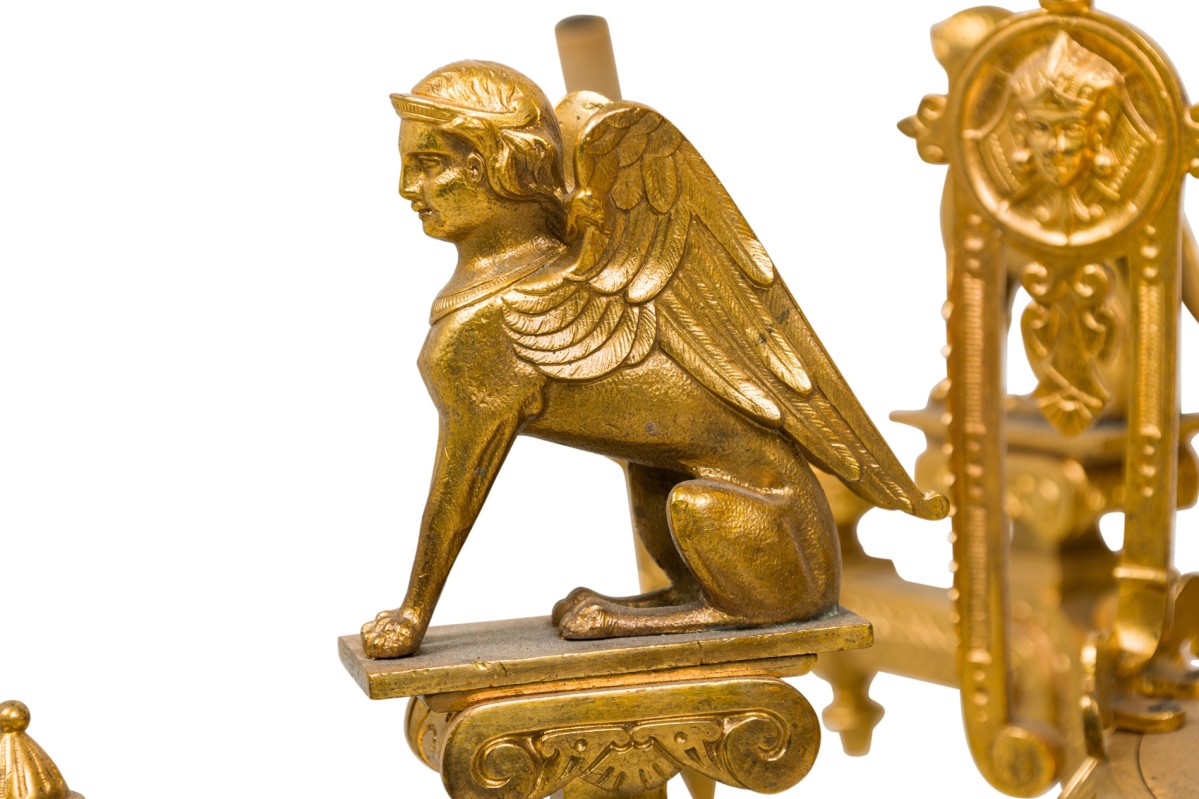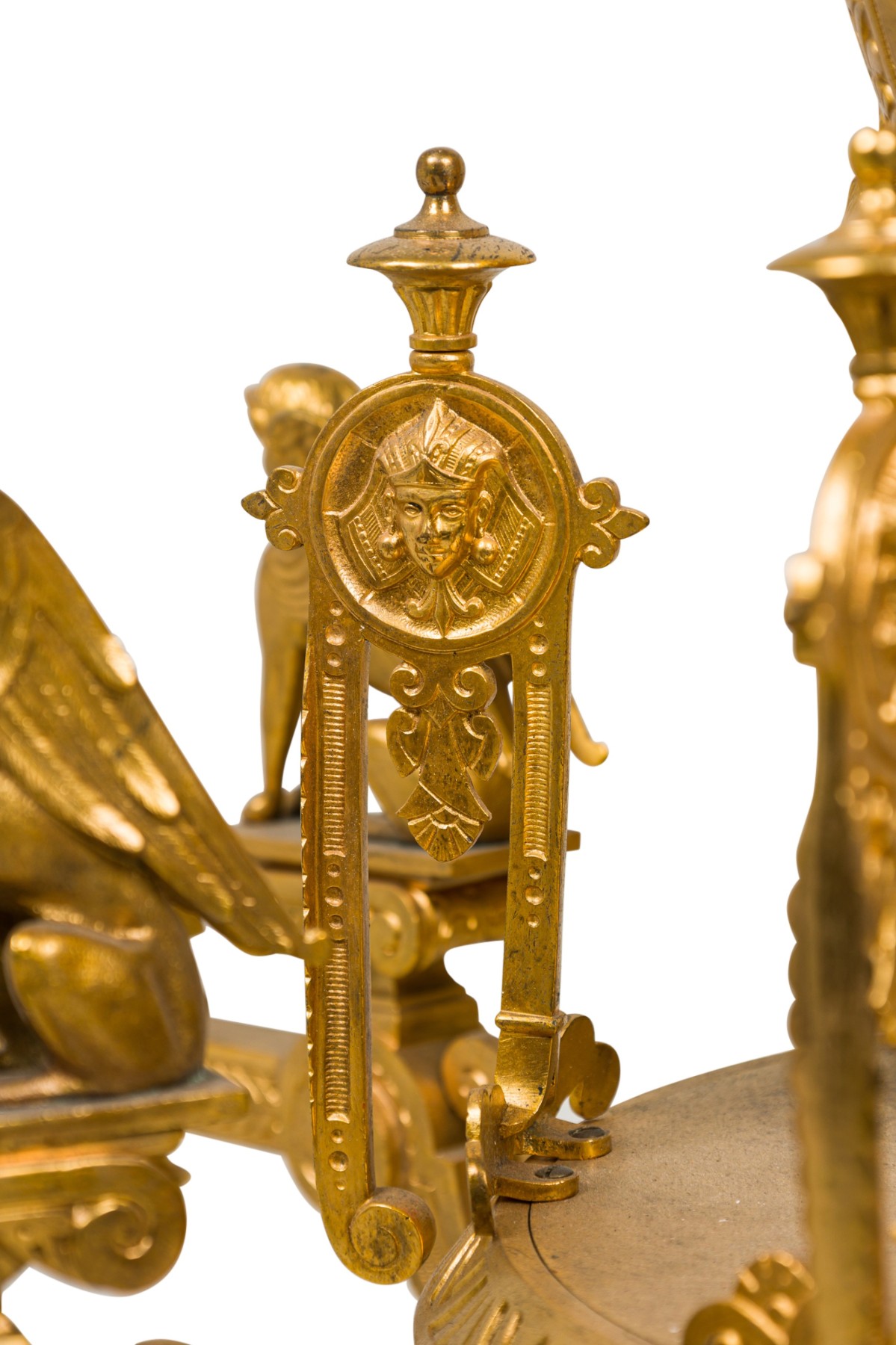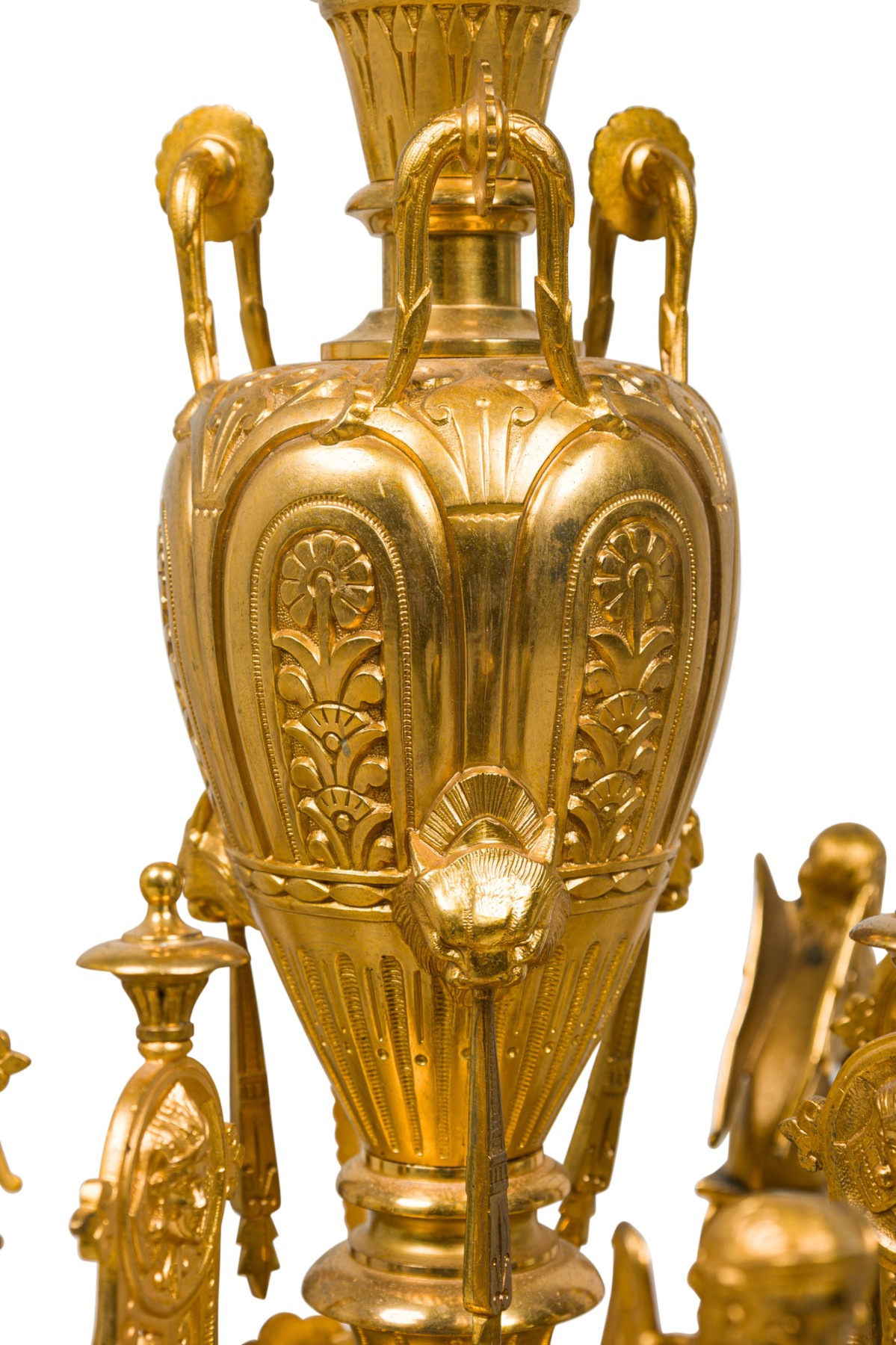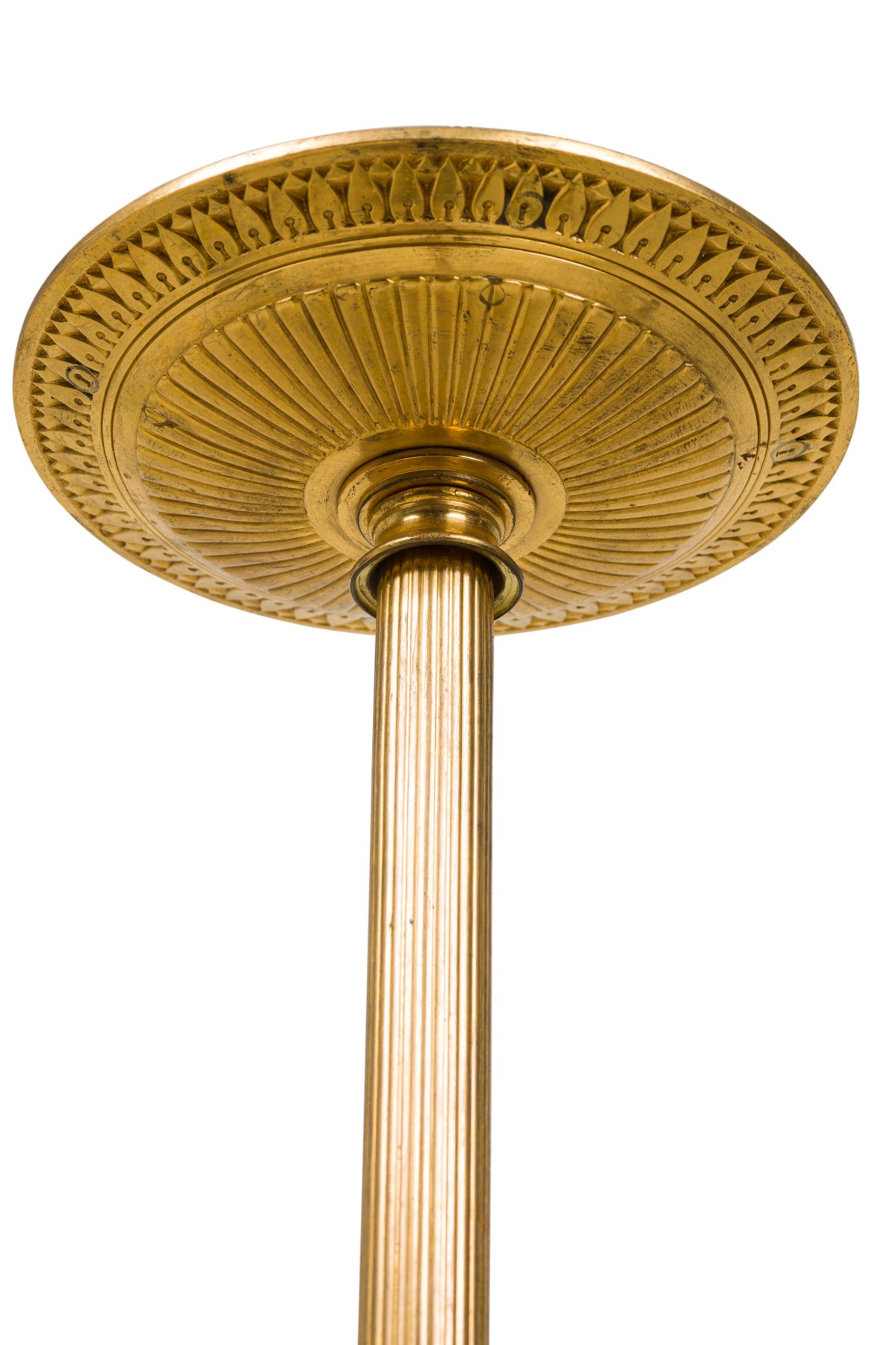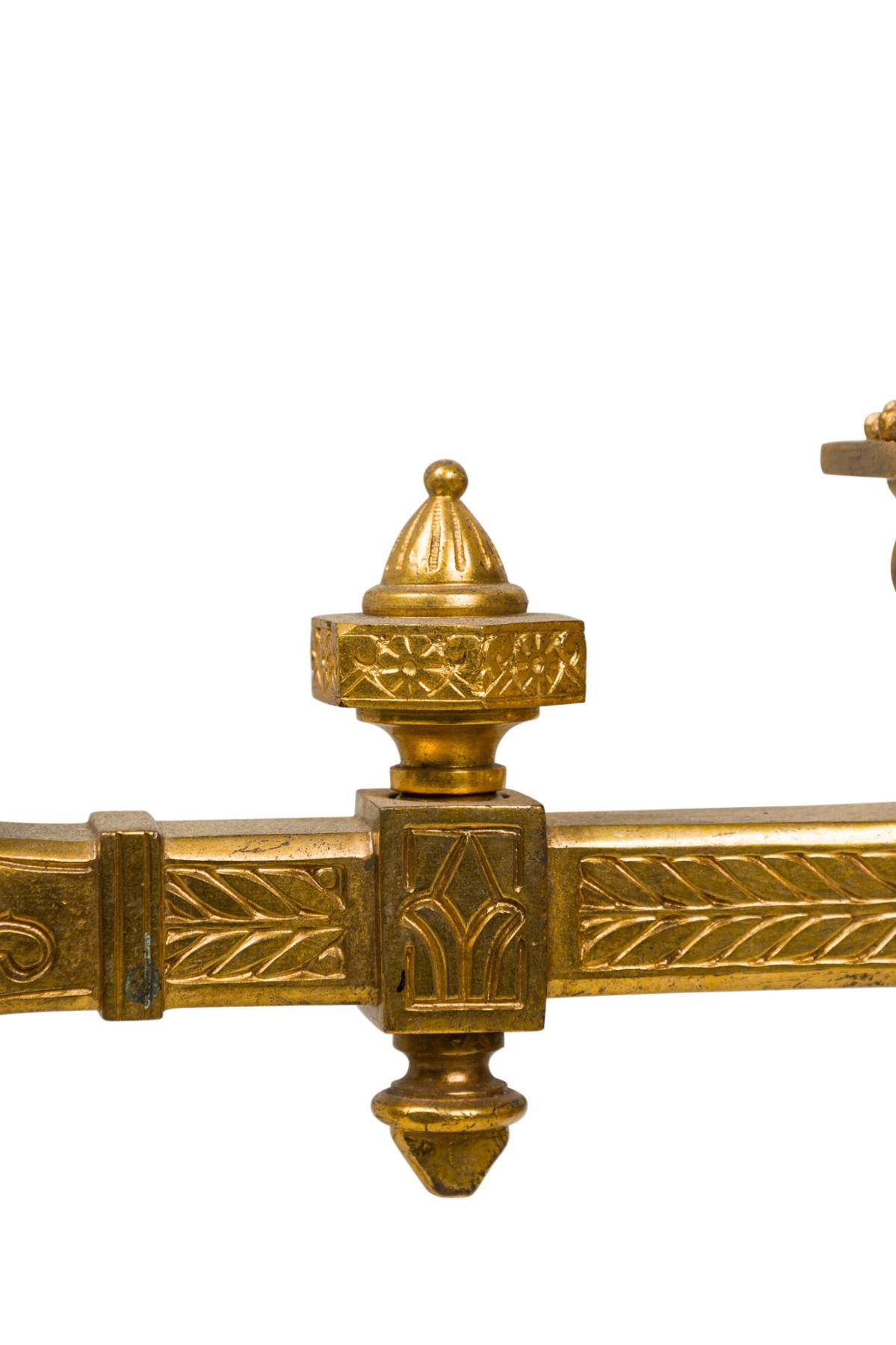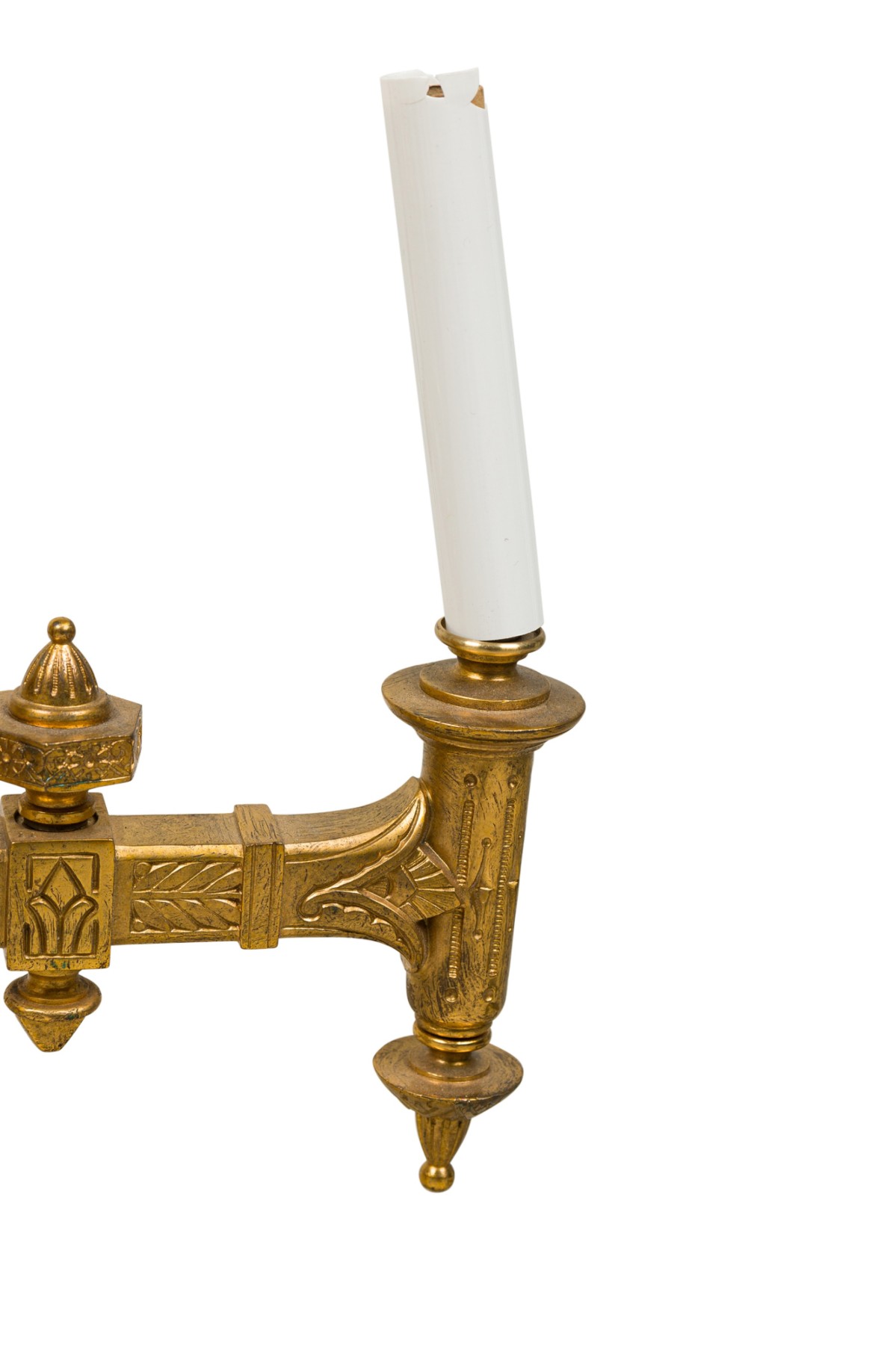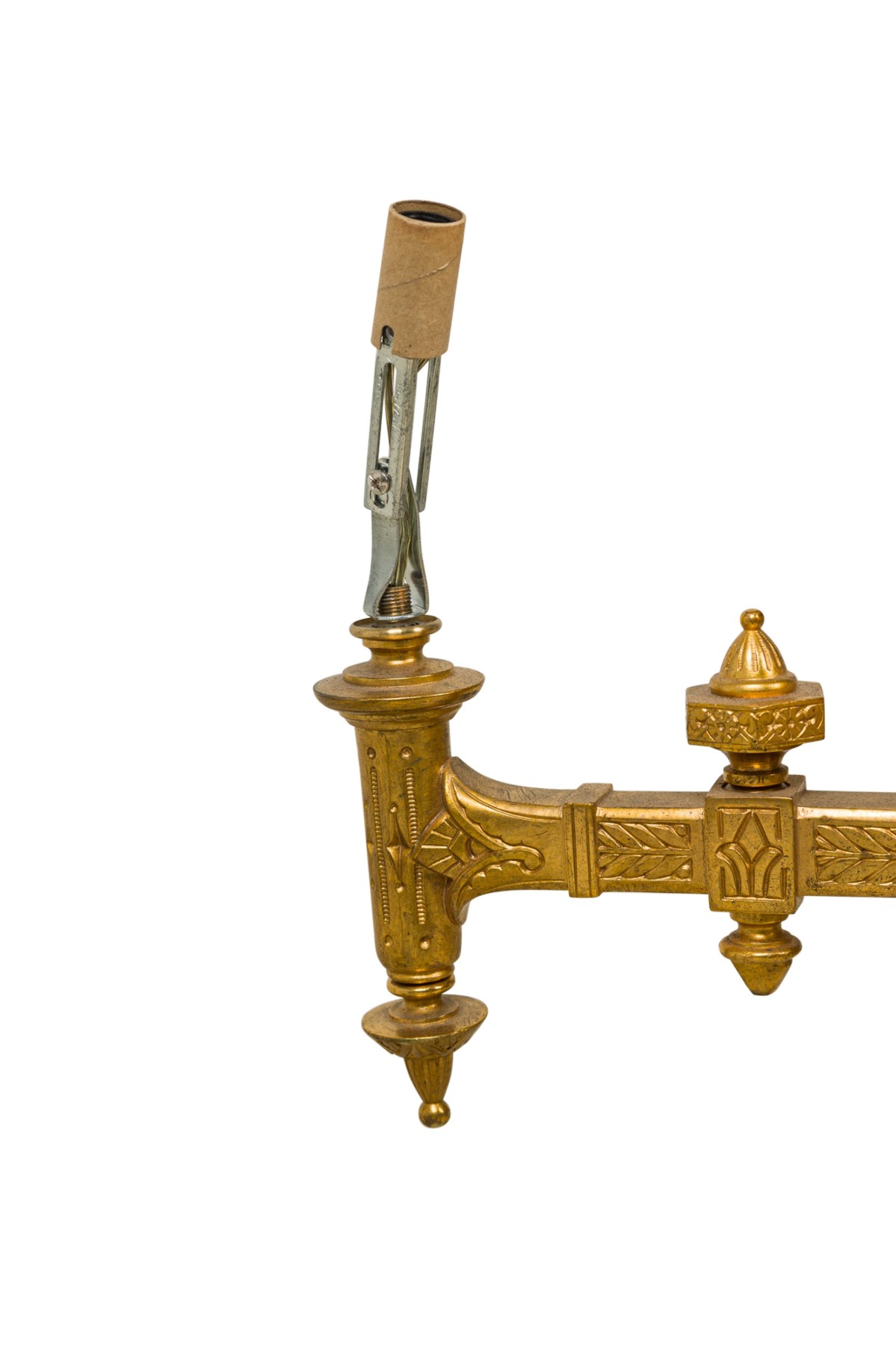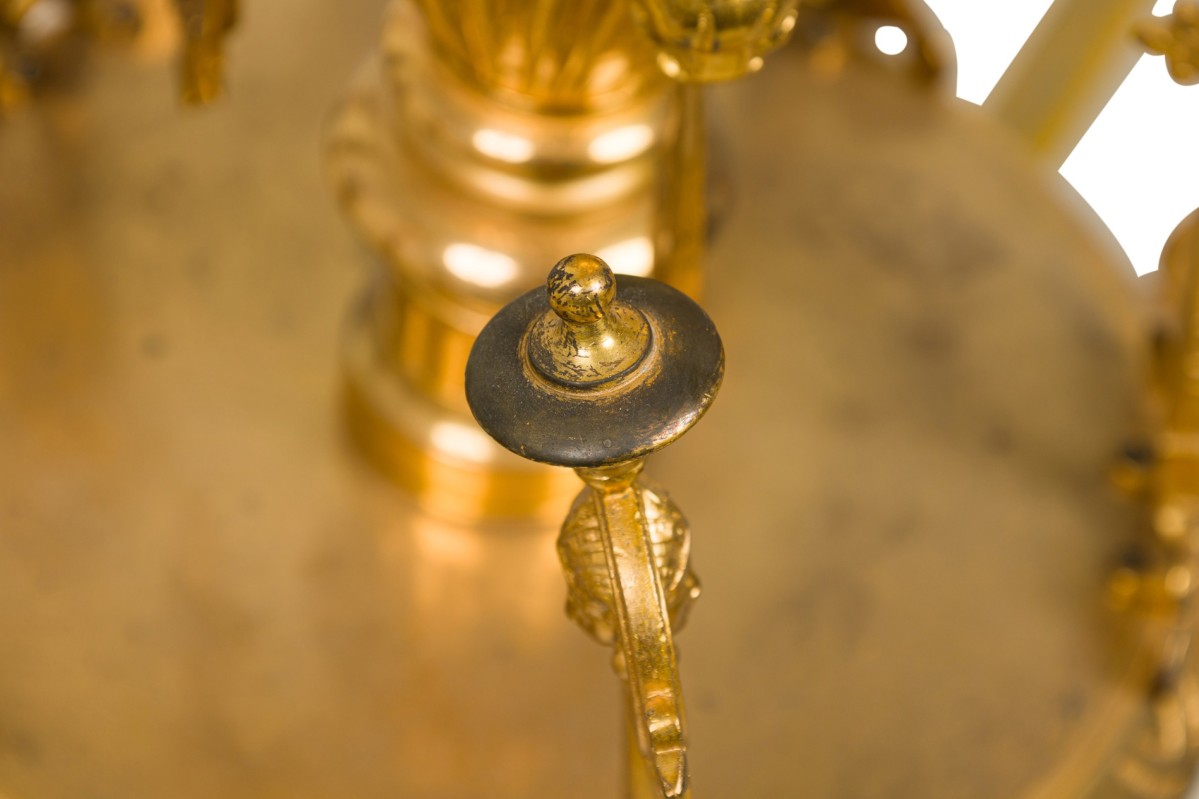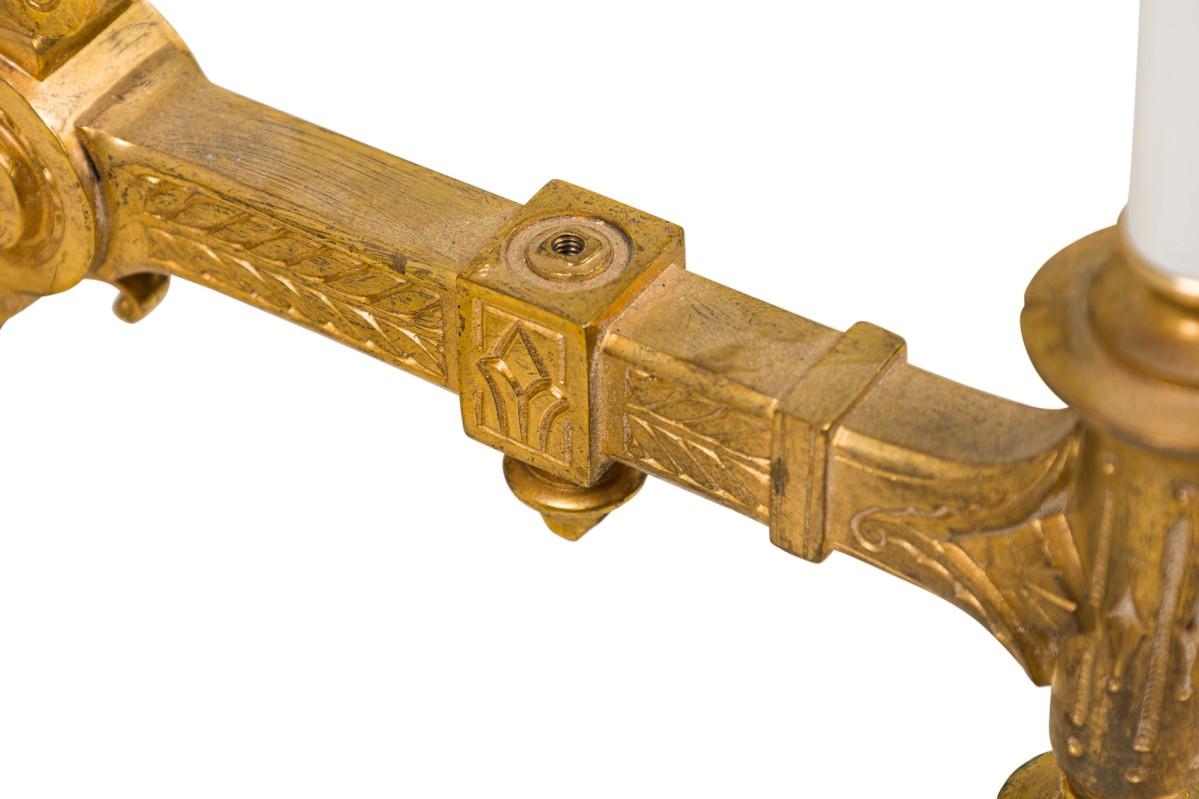X
{{ modalTitle }}
PLEASE FILL IN THE REQUIRED FIELDS.X
X
{{ modalTitle }}
Choose one of the options below.X
ITEM SUCCESSFULLY
ADDED TO PROJECT
French Empire Style Gilt Bronze Five-Light Chandelier
 French
French Empire
Empire Lighting
Lighting Chandelier
Chandelier
Newel Warehouse
32-00 Skillman Ave
Long Island City NY - 11101
 (212) 758-1970
(212) 758-1970
French Empire Style Gilt Bronze Five-Light Chandelier

Newel Warehouse
32-00 Skillman Ave
Long Island City NY - 11101
 (212) 758-1970
(212) 758-1970
 Lighting
Lighting Chandelier
ChandelierEmpire
A period of design during the reign of Napoleon I. It was most prevalent between 1800 and the late 1820s. It was considered the second wave of neoclassicism and marked a return to ostentatious design, a departure from the more conservative Directoire period that directly preceded it. It was intended to idealize the majesty of the French state and Napoleonic rule. Mahogany was the most popular wood during the period, and brass ornamentation and dark marbles were in vogue. Greek, Roman, and Egyptian motifs were also widely used. The style spread throughout Europe and appeared in America in some of Duncan Phyfe's work.
Finial
An ornamental, terminating piece that extends vertically from the apex of a design. In architecture, they are found at the tips of gables or spires, and in furniture, as top ornaments on cabinet corners, posts, or supports. Finial also refers to the decorative metal piece used to affix lampshades to table and floor lamps. They often take the shape of a ball, flame, flower, acorn, pineapple, or vase.
Neo-classic
Neo-classic refers to the second revival of classic design for interior decoration in the 18th century. This style was inspired by excavations of Pompeii and Herculaneum that begun in 1738. Common motifs include dolphins, lyres, and urns.
Empire
A period of design during the reign of Napoleon I. It was most prevalent between 1800 and the late 1820s. It was considered the second wave of neoclassicism and marked a return to ostentatious design, a departure from the more conservative Directoire period that directly preceded it. It was intended to idealize the majesty of the French state and Napoleonic rule. Mahogany was the most popular wood during the period, and brass ornamentation and dark marbles were in vogue. Greek, Roman, and Egyptian motifs were also widely used. The style spread throughout Europe and appeared in America in some of Duncan Phyfe's work.
Finial
An ornamental, terminating piece that extends vertically from the apex of a design. In architecture, they are found at the tips of gables or spires, and in furniture, as top ornaments on cabinet corners, posts, or supports. Finial also refers to the decorative metal piece used to affix lampshades to table and floor lamps. They often take the shape of a ball, flame, flower, acorn, pineapple, or vase.
Neo-classic
Neo-classic refers to the second revival of classic design for interior decoration in the 18th century. This style was inspired by excavations of Pompeii and Herculaneum that begun in 1738. Common motifs include dolphins, lyres, and urns.
Empire
A period of design during the reign of Napoleon I. It was most prevalent between 1800 and the late 1820s. It was considered the second wave of neoclassicism and marked a return to ostentatious design, a departure from the more conservative Directoire period that directly preceded it. It was intended to idealize the majesty of the French state and Napoleonic rule. Mahogany was the most popular wood during the period, and brass ornamentation and dark marbles were in vogue. Greek, Roman, and Egyptian motifs were also widely used. The style spread throughout Europe and appeared in America in some of Duncan Phyfe's work.
Finial
An ornamental, terminating piece that extends vertically from the apex of a design. In architecture, they are found at the tips of gables or spires, and in furniture, as top ornaments on cabinet corners, posts, or supports. Finial also refers to the decorative metal piece used to affix lampshades to table and floor lamps. They often take the shape of a ball, flame, flower, acorn, pineapple, or vase.
Neo-classic
Neo-classic refers to the second revival of classic design for interior decoration in the 18th century. This style was inspired by excavations of Pompeii and Herculaneum that begun in 1738. Common motifs include dolphins, lyres, and urns.




